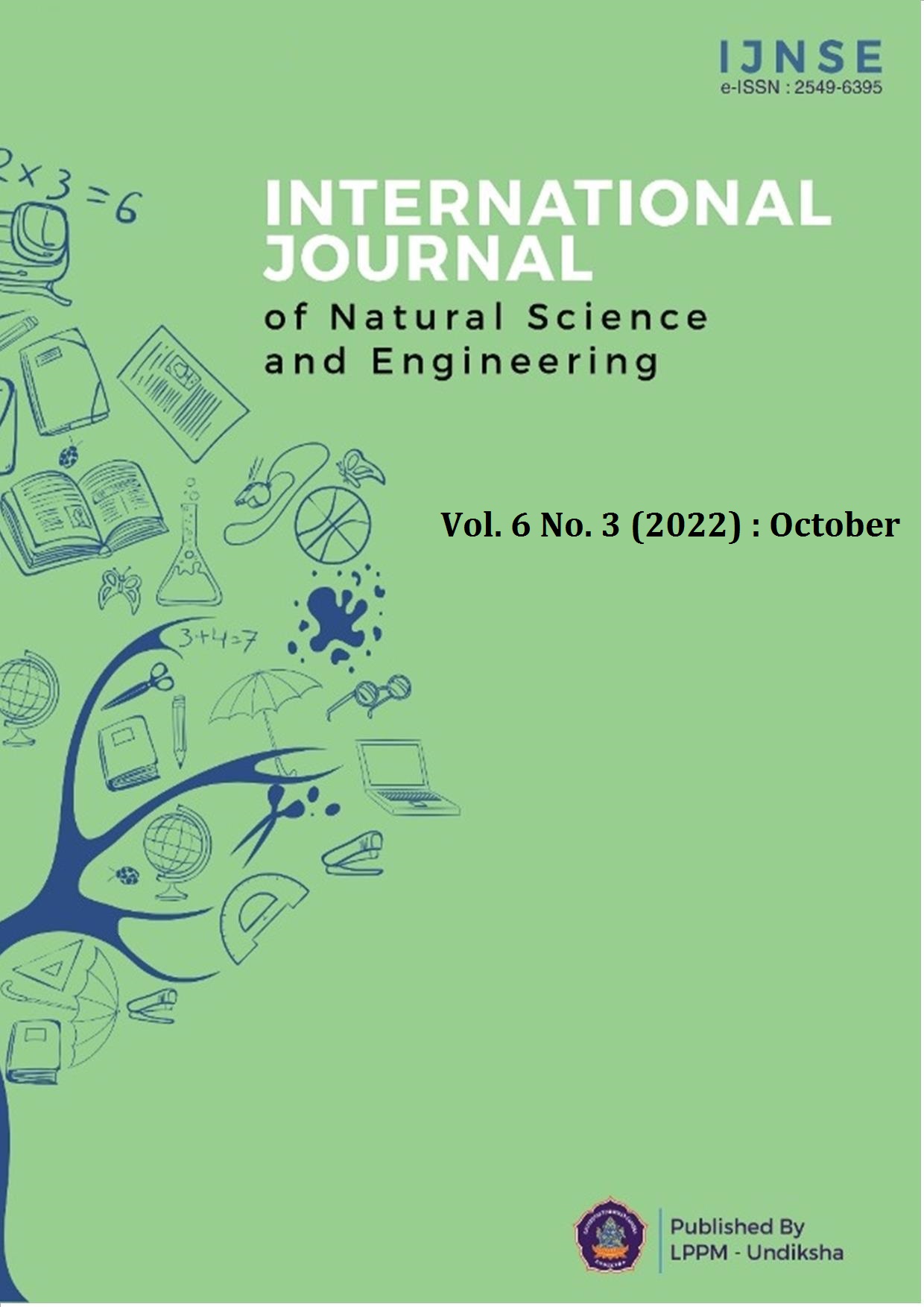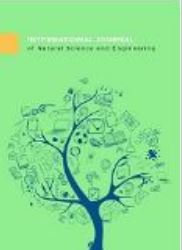Formulation and Analysis of Alcohol Content in Pineapple Infused Arak Bali with Gas Chromatography
DOI:
https://doi.org/10.23887/ijnse.v6i3.53031Keywords:
Formulation of Arak Bali, Pineapple Infused Arak Bali, Alchohol ContentAbstract
Gastronomic drinks are one of the local cultures that have an important role in the development of the tourism world, one of which is Arak Bali. Various products of Arak Bali infused began to be developed to enrich the flavor. One of the potential ingredients to increase scent and flavor is pineapple. This study was conducted to determine the most popular formulation and the alcohol content of Pineapple Infused Arak Bali as a new safe gastronomic drink in accordance with government regulations. The type of research used True experimental with Posttest Only Control Group Design. The sample used was pineapple infused Arak Bali that was formulated into 5 concentration variations. Furthermore, the alcohol content analysis was carried out using Gas Chromatography method. Sample F4 was selected based on organoleptic tests from 30 panelists as the most popular formula. Analysis of alcohol content showed that both samples were negative for methanol while the ethanol content in FD (34.22%) was classified as group C liquor and FU (18.08%) was classified as group B in accordance with government regulations.
References
Astarina, N. W. G., Astuti, K. W., & Wardiatiani. (2013). Skrining Fitokimia Ekstrak Metanol Rimpang Bangle. Jurnal Farmasi Udayana.
Astuti, N. P. W., Suaniti, N. M., & Mustika. (2018). Validasi Metode Dalam Penentuan Kadar Etanol Pada Arak Menggunakan Kromatografi Gas Detektor Ionisasi Nyala. Jurnal Kimia (Journal of Chemistry), 12(2). https://doi.org/10.24843/JCHEM.2018.v12.i02.p06. DOI: https://doi.org/10.24843/JCHEM.2018.v12.i02.p06
Ayuningtyas, K. D. (2016). Efek Etanol dan Metanol Pada Minuman Oplosan Terhadap Perubahan Histopatologi Organ Hepar Tikus Wistar Jantan. Universitas Jember.
Budiyanto, A., & Yulianingsih. (2008). Pengaruh Suhu Dan Waktu Ekstraksi Terhadap Karakter Pektin dari Ampas Jeruk Siam (Citrus nobilis L). Jurnal Pascapanen, 5(2). https://doi.org/10.21082/jpasca.v5n2.2008.37-44.
Dewi, I. A. K. S., Sendratari, L. P., & Mudana, I. W. (2014). Pemertahanan Tradisi Budaya Petik Laut Oleh Nelayan Hindu Dan Islam Di Desa Pekutatan, Jembrana -Bali. Widya Winayata: Jurnal Pendidikan Sejarah, 2(3). https://doi.org/10.23887/jjps.v2i3.4153.
Dragan, V. (2020). Gastronomic product in the function of development of different forms of tourism in Srem district. Održivi razvoj, 2(2). https://doi.org/10.5937/OdrRaz2002041V. DOI: https://doi.org/10.5937/OdrRaz2002041V
Elistyawati, I. A., Wendri, I. G. M., & Agung, I. G. A. G. (2020). Sustainable Utilization of “Arak Bali”; Processing It into Liqueur as Base Stuff for Food and Beverage Production. PalArch’s Journal of Archaeology of Egypt/ Egyptology, 17(7).
Fenita, Y., Mega, O., & Daniati, E. (2015). Pengaruh Pemberian Air Nanas (Ananas cosumus) terhadap Kualitas Daging Ayam Petelur Afkir. Jurnal Sain Peternakan Indonesia, 4(1). https://doi.org/10.31186/jspi.id.4.1.43-50. DOI: https://doi.org/10.31186/jspi.id.4.1.43-50
Fibriari, I., Gunawan, G., & Hastuti, R. (2012). Pengkayaan Alkohol Ciu Bekonang dengan Metode Destilasi Adsorptif Menggunakan Zeolit Alam dan Silika Gel. Jurnal Kimia Sains dan Aplikasi, 15(3). https://doi.org/10.14710/jksa.15.3.79-83. DOI: https://doi.org/10.14710/jksa.15.3.79-83
Hayati, A., Winarni, D., Antari, N. W. S., Resita, I. N., & Fauziah, E. N. (2018). Effects of Arak Bali Administration on Spermatozoa DNA Fragmentation and Testosterone Level of Rats (Rattus norvegicus). Folia Medica Indonesiana, 54(1). https://doi.org/10.20473/fmi.v54i1.8051. DOI: https://doi.org/10.20473/fmi.v54i1.8051
Jaya, Ngakan, A. W., M., D. K. S., & Putu, S. (2019). Mapping the potential for tourism strategic areas to improve the equality of development in Bali. Matec Web of Conferences, 276. https://doi.org/10.1051/matecconf/201927602008. DOI: https://doi.org/10.1051/matecconf/201927602008
Machin, A. (2012). Potensi Hidrolisat Tempe Sebagai Penyedap Rasa Melalui Pemanfaatan Ekstrak Buah Nanas. Biosaintifika: Journal of Biology & Biology Education, 4(2). https://doi.org/10.15294/biosaintifika.v4i2.2275.
Maligan, J. M., Salsabella, F., & Wulan, S. N. (2018). Uji Preferensi Konsumen Pada Karakteristik Organoleptik Produk Roti Gandum Utuh Di Kota Malang Jawa Timur. Jurnal Pangan dan A, 6(4). https://doi.org/10.21776/ub.jpa.2018.006.04.8. DOI: https://doi.org/10.21776/ub.jpa.2018.006.04.8
Maryuliana, Subroto, I. M., & Haviana, S. F. (2016). Sistem Informasi Angket Pengukuran Skala Kebutuhan Materi Pembelajaran Tambahan Sebagai Pendukung Pengambilan Keputusan Di Sekolah Menengah Atas Menggunakan Skala Likert. Jurnal Transistor Elektro dan Informatika (TRANSISTOR EI), 1(2), Jurnal Transistor Elektro dan Informatika (TRANSIS. https://doi.org/10.30659/ei.1.1.1-12.
Maryuliana. (2016). Sistem Informasi Angket Pengukuran Skala Kebutuhan Materi Pembelajaran Tambahan Sebagai Pendukung Pengambilan Keputusan Di Sekolah Menengah Atas Menggunakan Skala Likert. Jurnal Transistor Elektro dan Informatika, 1(2), 1–12. https://doi.org/10.30659/ei.1.1.1-12.
Muchtadi. (2000). Fisiologi Pasca Panen. Pelatihan Pasca Panen dan Prosesing Hortikultura, Ciawi. BPLLP.
Noor, J. (2012). Metodologi Penelitian. Kencana Prenada Media Group.
Pratiwi, D. P. E., Ayomi, P. N., & Candra, K. D. P. (2017). Balinese Arts And Culture As Tourism Commodity In Bali Tourism Promotion Videos. MUDRA: JURNAL SENI BUDAYA, 32(3). https://doi.org/10.31091/mudra.v32i3.178.
Rahayu, W. E., Mukminah, N., & Romalasari, A. (2018). Daya Terima Varian Rasa Koktail Buah Nanas (Ananas comosus L. Merr) dalam Menunjang Diversifikasi Produk. Jurnal Ilmiah Ilmu dan Teknologi Rekayasa, 1(1). https://doi.org/10.31962/jiitr.v1i1.4. DOI: https://doi.org/10.31962/jiitr.v1i1.4
Rosyadi, F. A., Prasavitri, K. P., & Widjaja, T. (2014). Optimasi Proses Produksi Etanol dari Molases Menggunakan Teknik Fermentasi- Ekstraktif. Jurnal Teknik ITS, 3(2). https://doi.org/10.12962/j23373539.v3i2.6459.
Saragih, M. D. S., Bakti, D., & Safni, I. (2018). Uji Preferensi Spodoptera litura (Lepidoptera: Noctuidae) Terhadap Beberapa Tanaman Leguminosa dan Palmae. Jurnal Pertanian Tropik, 5(2). https://doi.org/10.32734/jpt.v5i2.2997. DOI: https://doi.org/10.32734/jpt.v5i2.2997
Sriyanti. (2003). Studi Komparatif Kadar Gula dan Alkohol Tape Singkong dari Varietas yang Berbeda. Universitas Muhammadiyah Surakarta.
Sucitawathi, D., Dewi, N. L. Y., & Joniarta, I. W. (2019). Responsivitas Kebijakan Lokal Dalam Menghadapi Dinamika Sosial Di Desa Tradisional Bali Aga: Kasus Desa Tenganan Pegringsingan, Karangasem Bali. Jurnal Administrasi Negara, 9(2). https://doi.org/10.33005/jdg.v9i2.1632. DOI: https://doi.org/10.33005/jdg.v9i2.1632
Sudarma, N., & Parwata, I. M. O. A. (2017). Determination Ethanol In Arak With Gas Chromatography. Bali Medika Jurnal, 4(2). https://doi.org/10.36376/bmj.v4i2.10. DOI: https://doi.org/10.36376/bmj.v4i2.10
Sukadana, Bandem, & Tenaya. (2012). Technical Appraisal of Continuous Destilator Type as Alternative Fuel Producer from Basic Materials of Arak Bali. Jurnal Energi Dan Manufaktur, 3(2).
Sukadana, I. G. K., & Tenaya, I. G. N. P. (2016). Performansi mesin berbahan bakar etanol hasil destilasi arak Bali. Jurnal Energi Dan Manufaktur, 9(1).
Sulihono, A., Tarihoran, B., & Agustina, T. E. (2012). Pengaruh Waktu dam Jenis Pelarut Terhadap Ekstrak Pektin dari Kulit Jeruk Bali (Citrus Maxima). Jurnal Teknik Kimia, 4(18). https://doi.org/10.29103/jtku.v6i1.467. DOI: https://doi.org/10.29103/jtku.v6i1.467
Syartanti, N. I. (2021). Legalization of Arak Bali in Online News Headlines: Critical Discourse Analysis. Humaniora, 33(3). https://doi.org/10.22146/jh.68220. DOI: https://doi.org/10.22146/jh.68220
Udin, J., Nurlaelah, I., & Priyanto, A. (2020). Pengaruh Kadar Konsentrasi Saccharomyces Cereviciae Terhadap Sifat Organoleptik Dan Sifat Kimia (Alkohol Dan Gula) Pada Brem Cair Ipomea Batatas L. Edubiologica Jurnal Penelitian Ilmu dan Pendidikan Biologi, 8(1). https://doi.org/10.25134/edubiologica.v8i1.2982. DOI: https://doi.org/10.25134/edubiologica.v8i1.2982
Vacl, J. (2019). Motivation of Participation in Beer and Brewery Festivals in the Czech Republic. Kvasný průmysl, 61. https://doi.org/10.18832/kp2015028. DOI: https://doi.org/10.18832/kp2015028
Waisnawa, I. G. N. S., Arsani, I. A. A., Rajendra, I. M., & Sudana, I. M. (2022). Inovasi Teknologi Dan Optimalisasi Proses Destilasi Untuk Produksi Arak Tradisional Bali. Bhakti Persada: Jurnal Aplikasi Ipteks, 8(1). https://doi.org/10.31940/bp.v8i1.69-76.
Winarno. (2002). Kimia Pangan dan Gizi. Gramedia Pustaka.
Yeni, R., & Khairunnisa, A. S. (2021). Environmental communication on ecotourism development: a case study of Subak Sembung, Bali. E3S Web of Conferences, 316. https://doi.org/10.1051/e3sconf/202131604011. DOI: https://doi.org/10.1051/e3sconf/202131604011
Yusliana, Sarwendah, Laia, H. C. G., Daely, P. J., & Chiuman, L. (2019). Uji Daya Hambat Antibakteri Air Perasan Daging Buah Nanas (Ananas comosus (L) Merr Var. Queen) Terhadap Bakteri Salmonella typhi. Scientia Journal, 8(1). https://doi.org/10.5281/scj.v8i1.388. DOI: https://doi.org/10.35141/scj.v8i1.388





